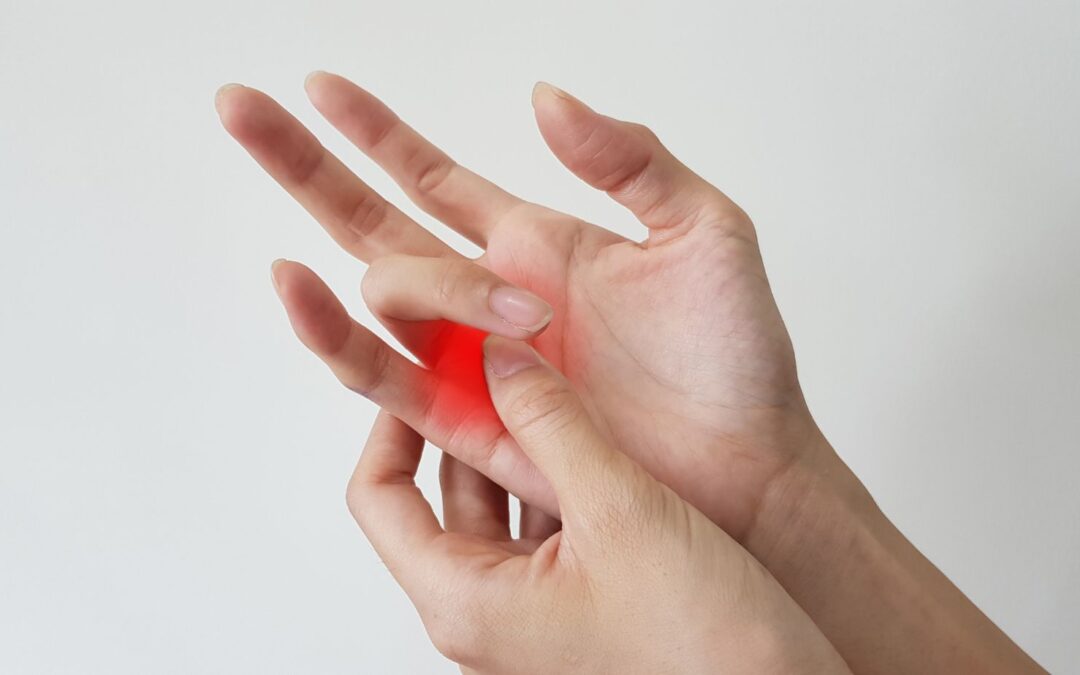My finger locks, what does it mean?
Locking of the finger when grasping, or even catching of the finger as it opens and closes can be a sign of a trigger finger. Trigger finger is a relatively common condition affecting the hand and fingers, and no, it doesn’t have to be associated with actually pulling a trigger.
In fact, any of the fingers and even the thumb can be involved, but the middle and ring fingers are most commonly affected. Catching and locking are the classic symptoms of a trigger finger but the underlying problem can lead to a wider spectrum of issues. This may include pain at the base of the finger, limited mobility or stiffness of the finger, swelling, a bump or nodule at the base of the finger, loss of strength or grip, even stiffness of adjacent fingers.
Anatomy of the Finger
To understand what happens in trigger finger, we need to understand some basic anatomy of the finger. The muscles that flex the fingers are actually in the forearm. The muscles are connected to the finger joints by tendons. The tendons are strong cords of collagen that are about the diameter of a pencil. At the base of each finger the tendons enter a tunnel or sheath formed by a series of tissue bands called pulleys.
The purpose of the tendon sheath is to hold the tendon in place to allow the finger to flex and extend through its full range of motion. Each finger has two tendons that pass through the tendon sheath and the thumb has one tendon. As the finger moves, under normal conditions, the tendons glide through the sheath smoothly.
Problems arise, however, when there starts to be friction or impingement of the tendon as it is trying to move through the sheath. This could be caused by the sheath being too thick or tight, the lining of the sheath being inflamed, the tendon being swollen, or a combination of any of these situations.
If the tendon is getting stuck as it is trying to move through the sheath, often the result is catching or locking. Sometimes the tendon is just too swollen or the sheath too inflamed for much movement to happen, which can result in painful stiffness and loss of mobility.
There are many factors that lead to the development of a trigger finger or trigger thumb and in most cases, it is hard to pinpoint a specific cause. There are certain medical conditions that can increase the risk of developing trigger finger, however, including diabetes, gout or rheumatoid arthritis.
Treatment of Trigger Finger
Treatment for trigger finger is warranted if symptoms begin to interfere with normal hand usage and activities. The simplest treatment is using a splint to prevent the finger from locking into a flexed position. This can help to reduce irritation of the tendon and tendon sheath and may be helpful in early or mild cases of trigger finger.
Corticosteroid injection is a commonly employed treatment option for stubborn trigger fingers. This allows a more targeted treatment by placing the steroid medication, which is a potent anti-inflammatory, within and around the inflamed tendon sheath and swollen tendon. Injections can be effective at treating trigger finger with up to 60-70% chance of symptom resolution after an injection.
If symptoms return or don’t resolve completely, injection can be done again. Repeated injections, beyond 2 or sometimes 3, are typically not recommended due to potential side effects such as tissue atrophy and weakening of the tendons.
Surgery for Trigger Finger
If conservative treatments fail to improve or resolve a trigger finger, then surgery may be considered. Surgery typically involves a small incision at the base of the affected finger. The tight band of tissue that acts as the entrance to the tendon sheath is then released. This band is called the A1 pulley. Any inflamed tendon lining is also removed. Typically, this allows the tendon to move more smoothly through the tendon sheath.
Occasionally there can be an abnormal connection between the two tendons that pass through the tendon sheath and this would also need to be released. Trigger finger release surgery can be done as an in-office procedure with local anesthetic in most cases, but if needed it can be done with sedation or anesthesia. Having the surgery in an office setting can offer a straightforward and hassle-free approach to taking care of the problem.
The surgery site is injected with numbing medicine (local anesthetic). Once that has taken effect, the hand is cleaned and sterilized with a surgical cleansing solution. The incision is made and the tendon sheath identified, the A1 pulley is released, and the incision is closed with 2 or 3 sutures.
Typically, a gauze wrap is placed for a few days and the sutures are removed in 1-2 weeks. Finger movement is encouraged right away but heavy lifting or forceful grasping should be avoided for a couple of weeks. Occasionally hand therapy is needed if there is a lot of swelling, stiffness or scarring after the procedure.
Check out https://www.assh.org/handcare/condition/trigger-finger for more information and some diagrams and videos about trigger finger!
Written by: Zachary Jager, MD
Related articles:

